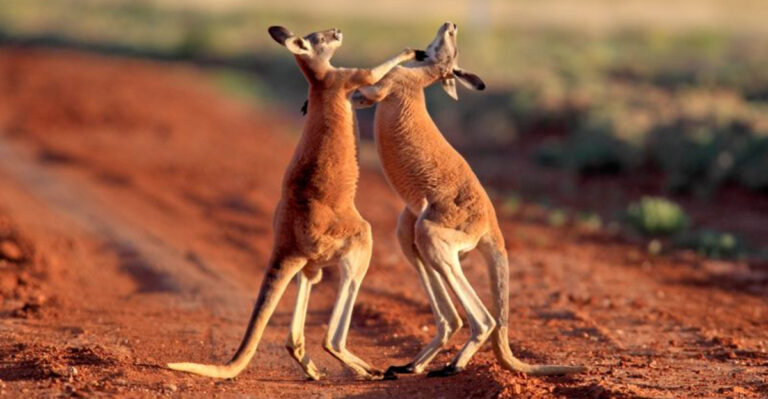15 Fascinating Mammals That Are Gone Forever And We’ll Never See Again
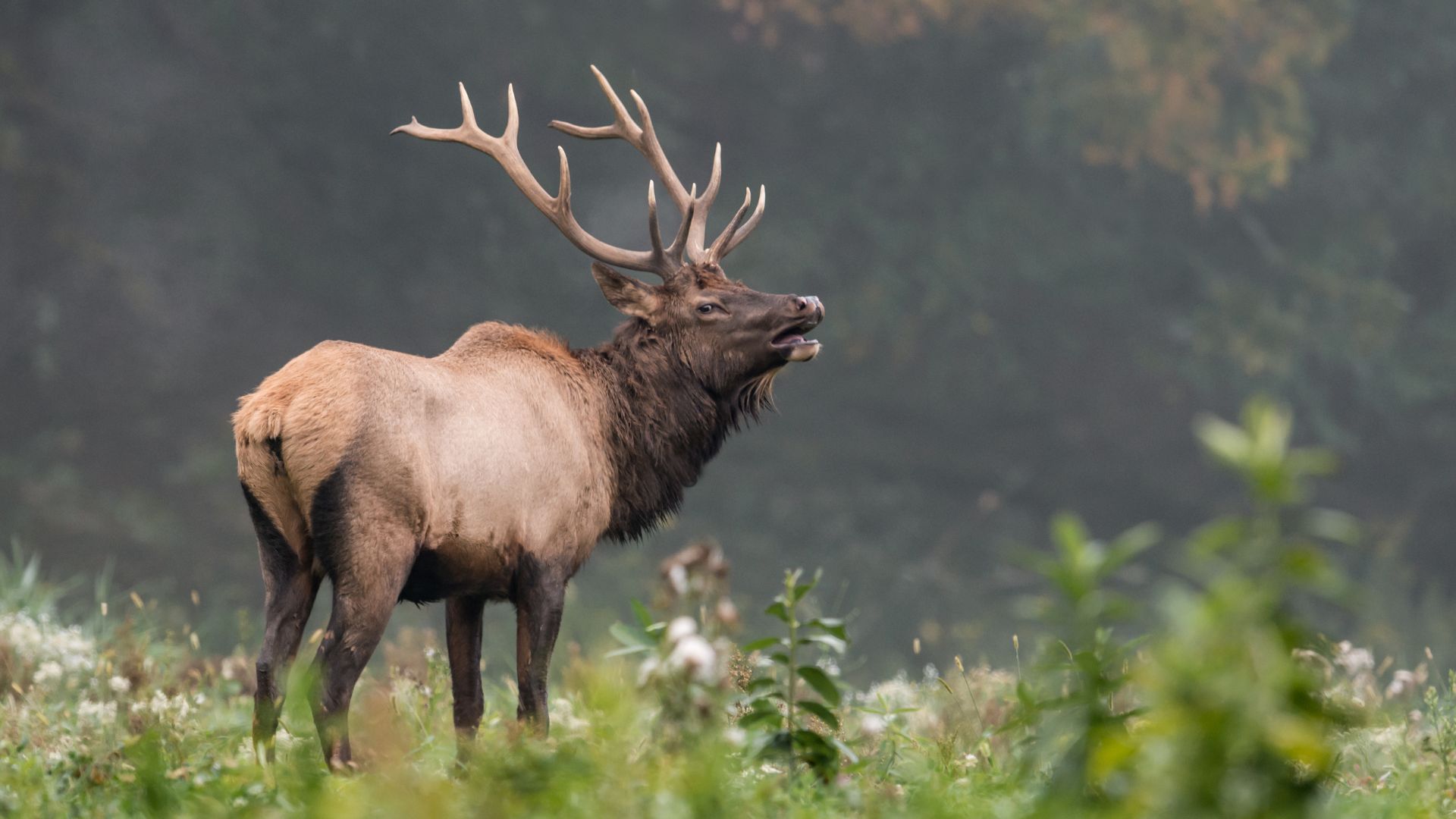
Throughout history, Earth has been home to a variety of incredible mammals, some of which were so unique and fascinating that their existence still captures our imagination today.
Unfortunately, many of these extraordinary creatures are gone forever, leaving behind only their fossils and the stories of their once-dominant presence. From the majestic woolly mammoth to the elusive thylacine, these mammals shaped ecosystems and influenced the world as we know it.
In this article, we’ll explore 15 fascinating mammals that are now extinct, delving into what made them special and the reasons behind their disappearance. While we can never see them again, their legacy continues to inform and inspire scientific discoveries and conservation efforts.
1. Bali Tiger
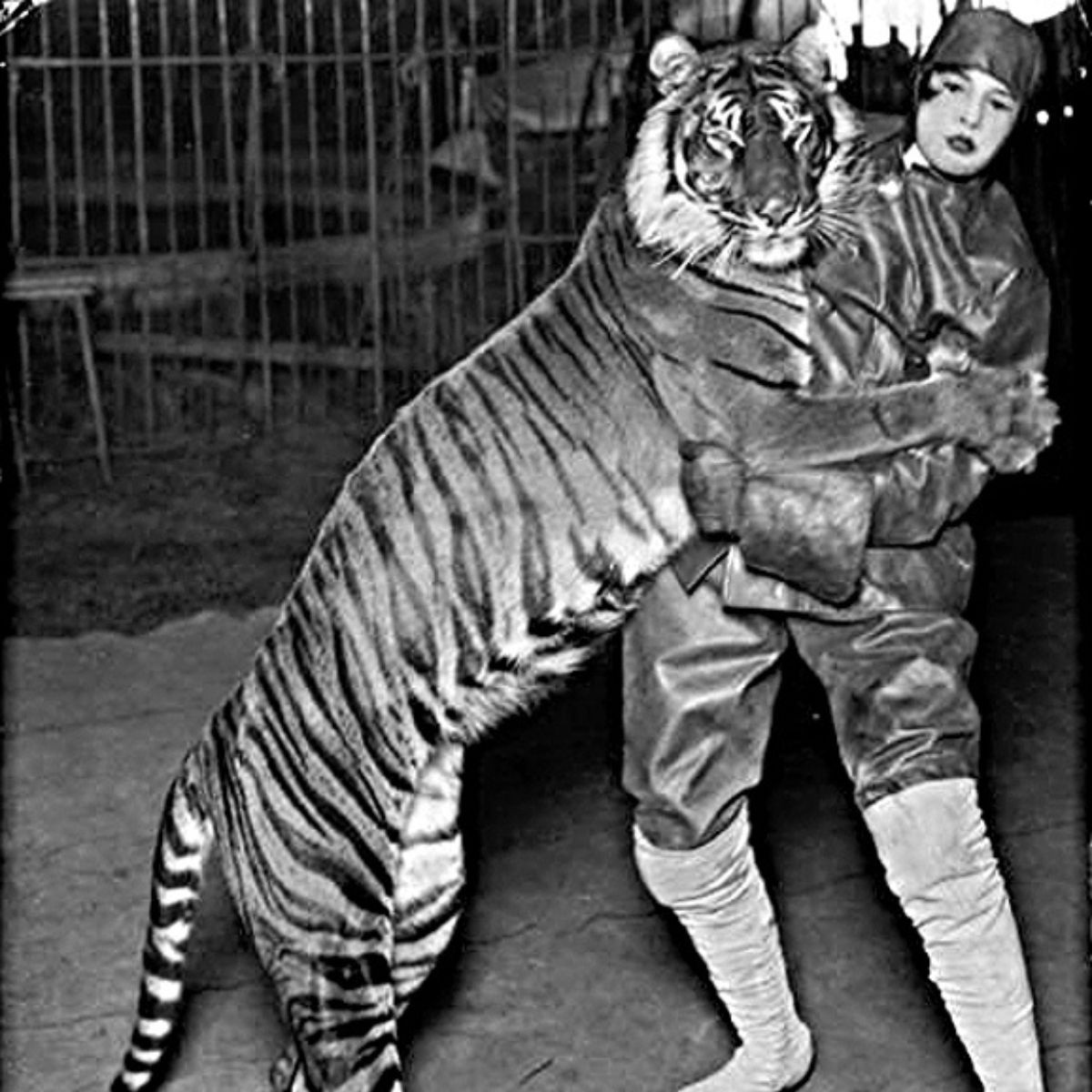
Let’s kick things off with the Bali Tiger, the first tiger subspecies to go extinct in modern history.
Also known as the Sunda Island Tiger, this extinct mammal was once considered the smallest tiger species, comparable in size to a mountain lion or leopard.
It was driven to extinction due to relentless hunting and the loss of its natural habitat and prey. The last confirmed sighting was in 1937 when the final known Bali Tiger was hunted.
2. Camelops

Camelops was one of the last giant camels to roam North America, thriving from 3.6 million to 11,700 years ago.
These massive mammals stood around 7 feet tall and weighed approximately 1,800 pounds. As herbivores, they primarily fed on plants and bushes.
While the precise cause of their extinction is not definitively known, it is speculated that a combination of climate change and human hunting likely contributed to their disappearance.
3. Eobasileus

You might easily mistake the Eobasileus for a rhinoceros, but this extinct creature actually belonged to the order Dinocerata.
Often referred to as the “American horned dawn-king” Eobasileus roamed North America during the Eocene epoch and had three pairs of horns that adorned its skull.
This large land mammal could reach up to 13 feet in length and weighed over 8,000 pounds.
Though it appeared intimidating, Eobasileus was likely a herbivore, feeding on the lush vegetation of that period.
4. Irish Elk
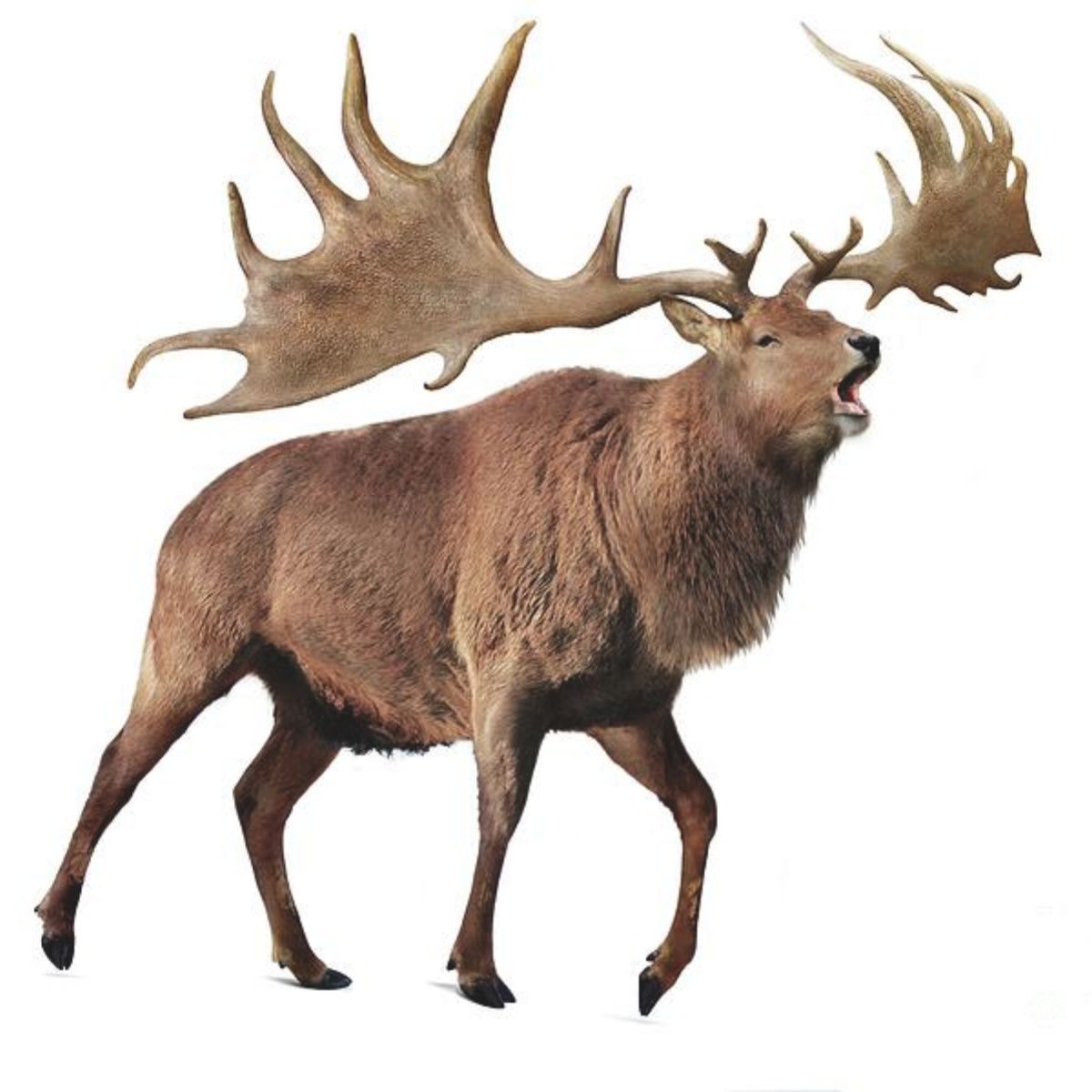
The name of this extinct mammal is misleading, as it is neither an elk nor originated in Ireland. In fact, it is considered to be the largest deer species that ever existed.
Standing 7 feet tall at the shoulders, with antlers spanning 12 feet and weighing about 90 pounds, these giant herbivores roamed the Earth around 8,000 years ago during the Pleistocene Epoch.
The reasons for their extinction are different; while some scientists suggest that their enormous size made survival difficult, others point to food shortages or climate change as key contributing factors.
5. Pyrenean Ibex
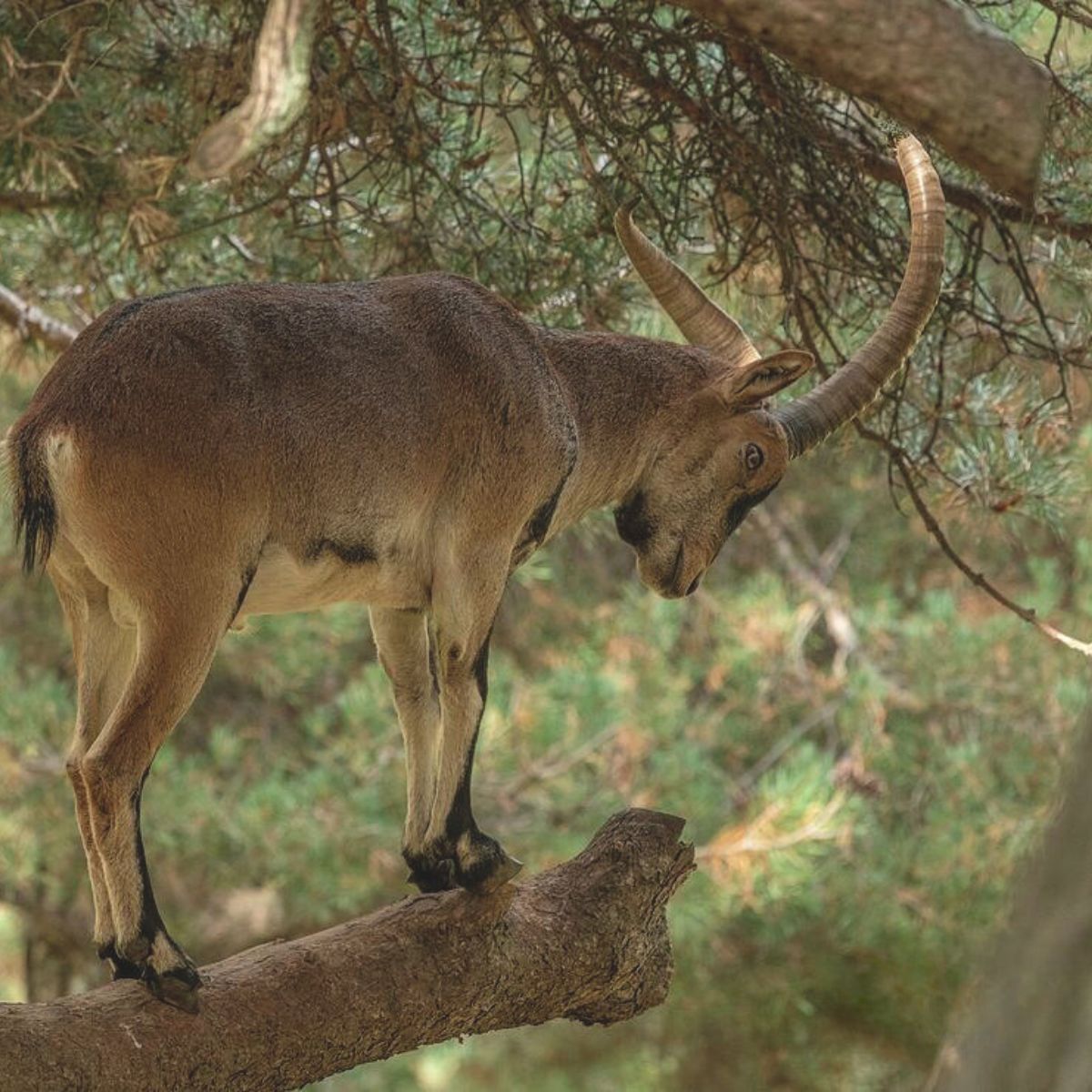
The Pyrenean Ibex, a wild goat species, once inhabited mountainous and cliff-like areas before facing extinction. What’s interesting about these mammals is that they actually went extinct twice.
How is that even possible? Well, in January 2000, a tree fell on the last known living Pyrenean Ibex, marking its first extinction.
Yet, the story didn’t end there. In a groundbreaking scientific attempt, researchers cloned the species three and a half years later.
However, despite their success in creating a clone, the newborn ibex took its first and last breath within minutes, rendering the Pyrenean Ibex extinct a second time.
6. Quagga

Quagga looks like a cross between a horse and a zebra – but it’s not a zorse! This extinct mammal was known for its distinctive appearance, featuring zebra-like stripes on its head while the rest of its body boasted a reddish-brown color.
With long, sturdy legs, the Quagga could reach impressive speeds of up to 40 mph and had a powerful kick to defend itself if threatened.
Sadly, the last known Quagga passed away in 1872.
7. Saber-Toothed Cat

Many scientists’ favorite creature from the fossil record is indeed the Sabre-Toothed Cat, commonly referred to as the Saber-Toothed Tiger.
This majestic predator got its name due to its signature long, sharp canine teeth that jutted down from its upper jaw and were essential for hunting.
The Saber-Toothed Cat roamed the northern regions of the globe before going extinct around 10,000 years ago.
Although they were fearsome hunters, some studies suggest these cats also had a social side, often caring for injured or sick members of their group.
8. Steller’s Sea Cow
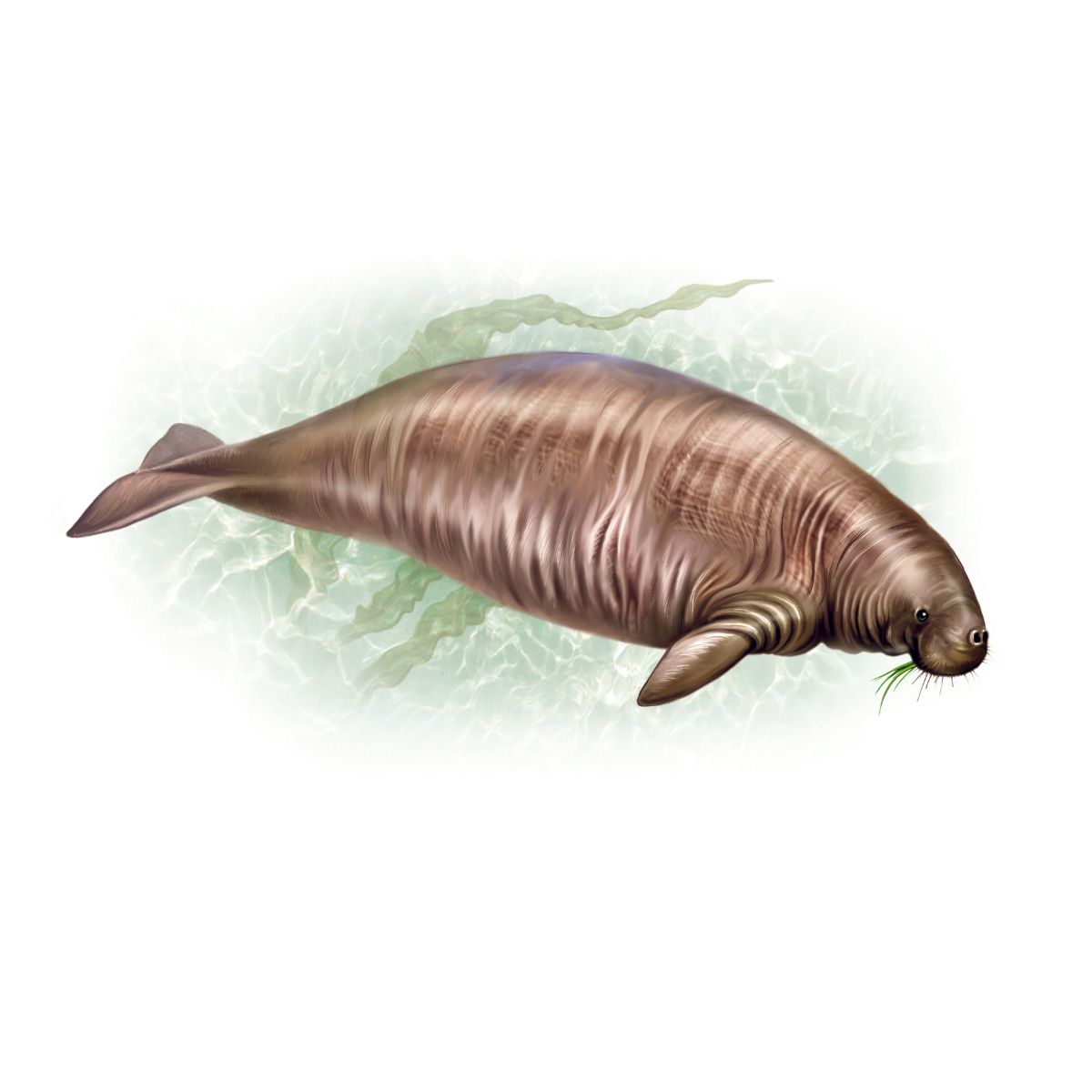
Steller’s Sea Cow was first discovered in 1741 by the naturalist Georg Wilhelm Steller during the Vitus Bering expedition.
This enormous marine mammal, much larger than today’s manatees, could grow up to 25 feet long and weigh more than 8,000 pounds.
It was named ‘sea cow’ due to its habit of living in herds and feeding on seagrass. Unfortunately, Steller’s Sea Cow went extinct just 27 years after its discovery, primarily due to overhunting by humans.
9. Thylacine

Although commonly known as the Tasmanian tiger, Thylacine actually looked more like a medium-sized dog than anything else.
This unique marsupial carnivore, weighing between 30 and 60 pounds, had striking yellowish-brown fur with dark stripes along its back.
Despite being highly adaptable, the Thylacine couldn’t withstand relentless hunting by humans, who often blamed it for livestock losses.
Unfortunately, intense hunting pressure and habitat destruction ultimately led to its extinction.
10. Thylacosmilus
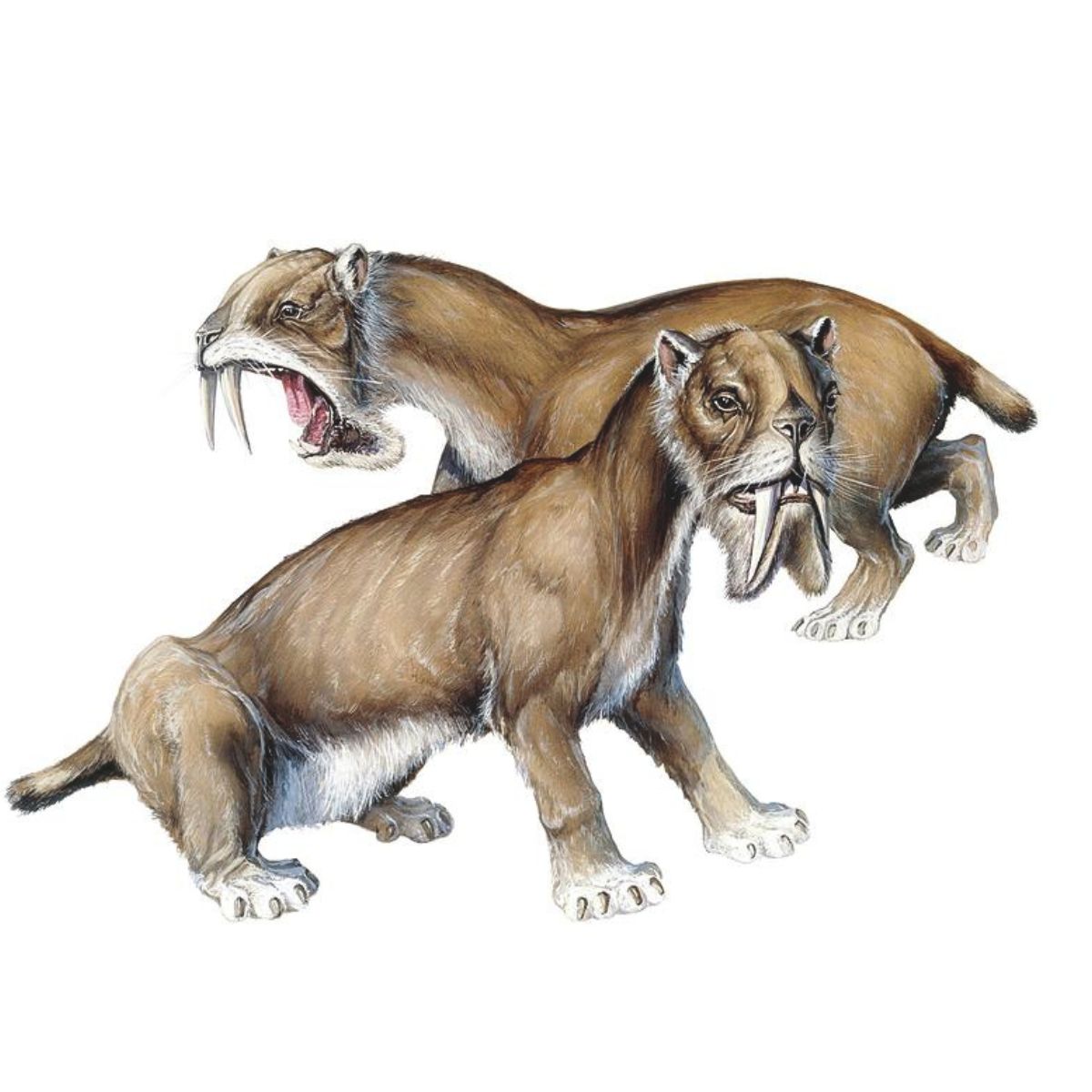
Although bearing a strong resemblance to the Sabre-Toothed Cat, Thylacosmilus actually belongs to a completely different branch of mammals, known as Metatheria.
This fascinating predator roamed South America from the Late Miocene to the Pliocene epochs.
With its unique jaw structure – with a ‘pouch’ – capable of opening over 90 degrees, and its two sharp, dagger-like teeth that could grow over 7 inches long, Thylacosmilus was truly a magnificent predator.
Sadly, it went extinct following the formation of the land connection between North and South America.
11. Wolly Mammoth
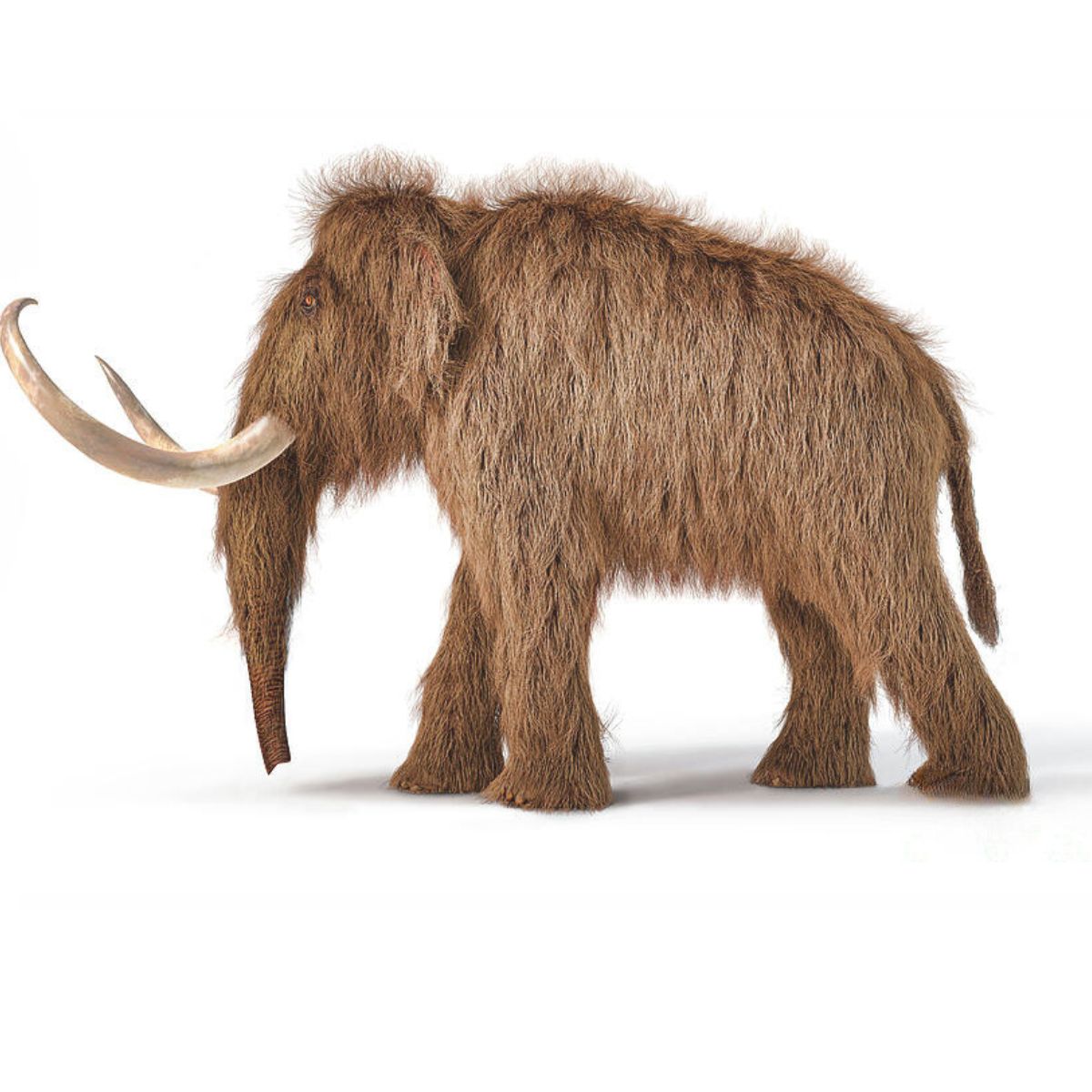
And finally, we’re wrapping up with the hero of our childhood – Manny from Ice Age.
Woolly Mammoths were enormous, shaggy mammals that roamed the cold northern regions of the globe.
Known for their long, curved ivory tusks and distinctive trunks, these gentle giants likely became extinct around 10,000 years ago, due to a combination of climate change and overhunting.
Due to their size and other similar traits, they are considered close relatives of today’s modern elephants.
12. Wooly Rhinoceros
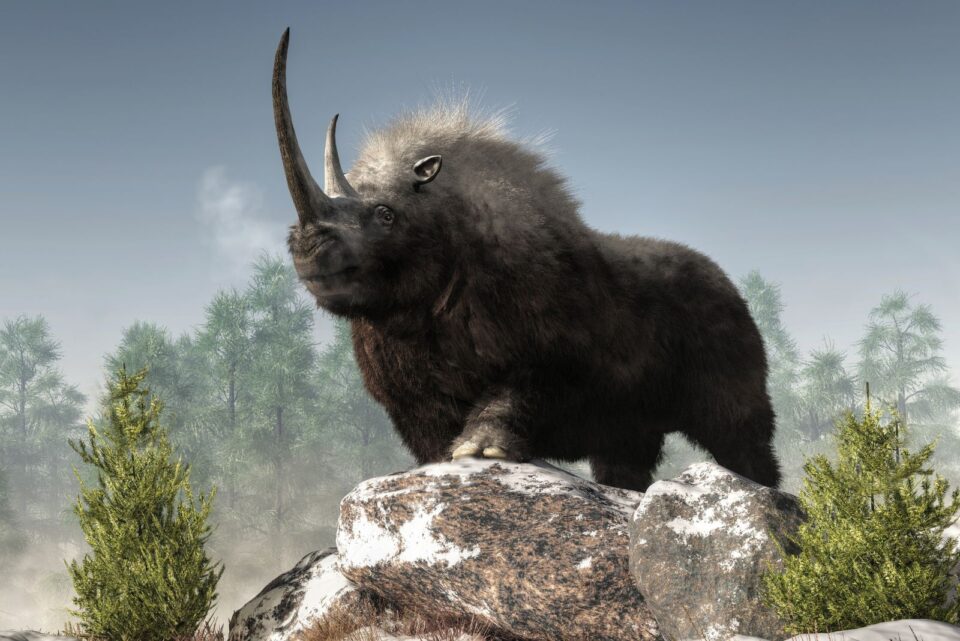
Credit: Shutterstock
The woolly rhinoceros (Coelodonta antiquitatis) was a majestic Ice Age mammal that roamed the vast grasslands of Europe and Asia. Adapted to cold climates, it was covered in thick fur and had a large, curved horn for defense and foraging.
These gentle giants coexisted with early humans and other megafauna but faced a dramatic decline due to climate changes and overhunting. The species is believed to have gone extinct approximately 10,000 years ago during the end of the last Ice Age.
Fossil evidence and preserved remains in permafrost offer us a glimpse into their life, but sadly, their unique adaptation to the Ice Age environment couldn’t withstand the rapid warming and human expansion of the era.
14. American Lion
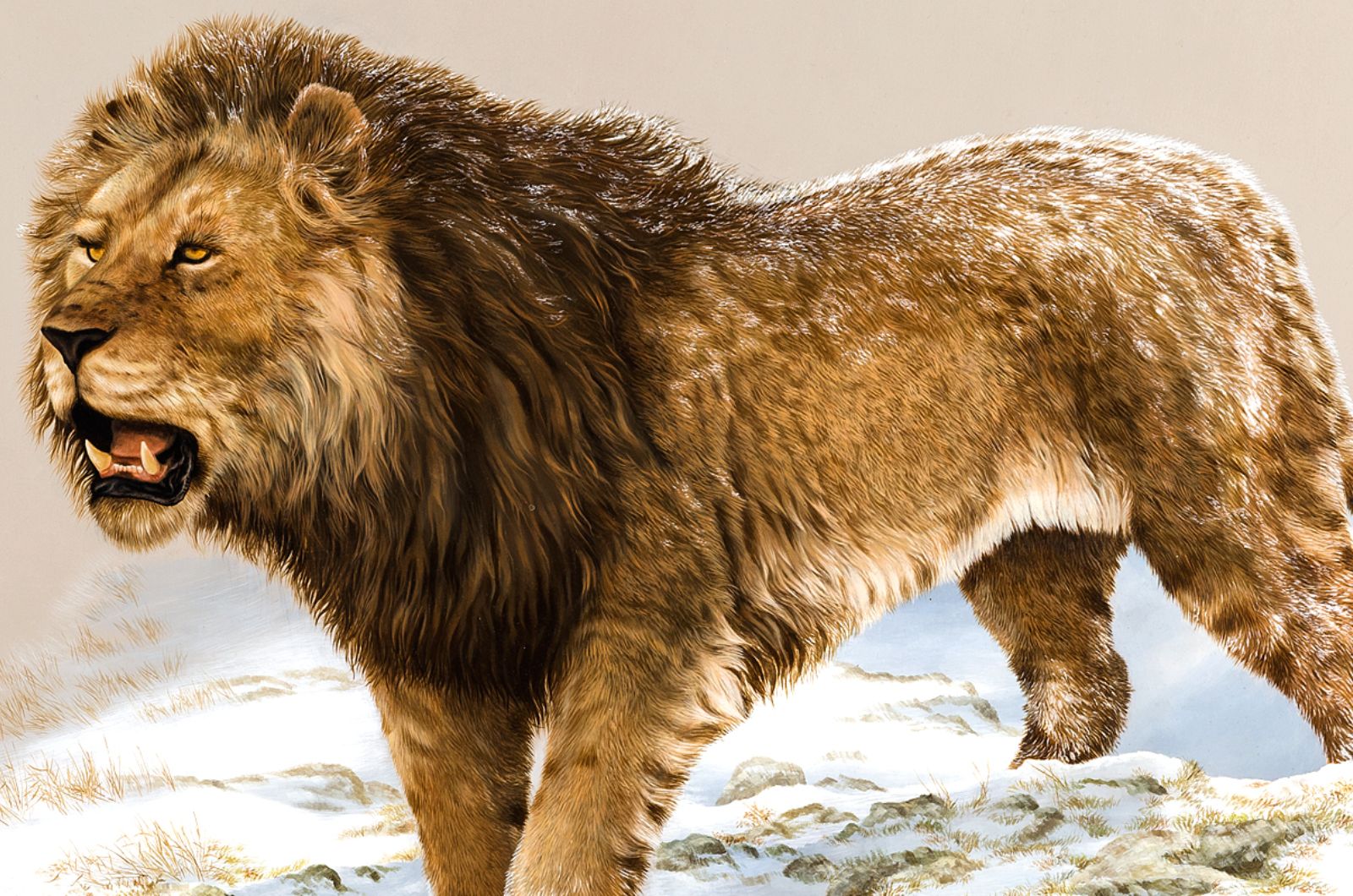
Credit: Beringia
The American lion (Panthera atrox), one of the largest cats to ever walk the Earth, roamed the vast grasslands and forests of North America during the Pleistocene Epoch. This apex predator, larger than modern lions, hunted giant herbivores like bison and mammoths.
Despite its dominance, the American lion went extinct around 10,000 years ago, likely due to a combination of climate changes and the disappearance of its prey at the end of the last Ice Age. Fossil remains have revealed its impressive size and strength, making it a fascinating subject for researchers studying Ice Age predators.
Though long gone, the American lion stands as a symbol of the incredible megafauna that once dominated the ancient landscapes of the Americas.
15. The Giant Ground Sloth

The Giant Ground Sloth was a massive herbivorous mammal that roamed the Americas during the Pleistocene Epoch. Standing up to 20 feet tall when reared on its hind legs, it had large claws used for defense and foraging for vegetation.
This slow-moving giant, which likely coexisted with early humans, became extinct around 10,000 years ago, likely due to a combination of climate changes and overhunting. Fossilized remains of these creatures have been found across North and South America, giving us a glimpse into the size and scale of these incredible creatures.
Despite their gentle nature, the Giant Ground Sloth’s size and powerful claws made them one of the most impressive animals to ever walk the Earth.





